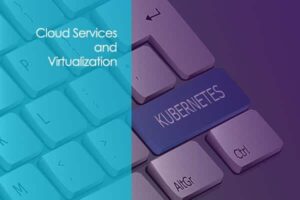Course Overview

Course objectives
A Kubernetes Certification can take your career to a whole new level. Learning Kubernetes is essential for any DevOps professional. DevOps engineers are always in demand. Currently, the average Silicon Valley salary for a DevOps engineer is 20% higher than what a software engineer makes. DevOps engineers make an average of $140,000 to $200,000 annually. Kubernetes is an open-source system for automating deployment, scaling, and management of containerized applications. It was originally designed by Google and is now maintained by the Cloud Native Computing Foundation
Modules
Module 1: Course Overview
- 1.1 Course Overview
- 1.2 Course PreReqs
Module 2: Kubernetes and Container Fundamentals
- 2.1 Core Concepts
- 2.2 What is the CKAD Exam
- 2.3 Why Get Certified
- 2.4 CKAD Exam Domains
- 2.5 APIs
- 2.6 Demo – Explore APIS
- 2.7 Pods
- 2.8 Whiteboard – Pod Creation Workflow
- 2.9 Create a Pod
- 2.10 Lifecycle Status
- 2.11 Inspecting Pods
- 2.12 Demo – Create a Pod and Inspect
Module 3: Configuration
- 3.1 Configuration
- 3.2 Understand Configmaps
- 3.3 Understand Security Contexts
- 3.4 Demo – Create a Security Context
- 3.5 Create and Consume Secrets
- 3.6 Understand Service Accounts
- 3.7 Demo – Create a Pod to Use a Secret
- 3.8 Demo – Define a Service Account
Module 4: Multi Container Pods
- 4.1 Multi Container Pods
- 4.2 Multi Container Pods Design and Patterns
- 4.3 Ambassador Containers
- 4.4 Connecting to Pods
- 4.5 Side Cars
- 4.6 Demo – Create an Init Container
Module 5: Observability
- 5.1 Observability
- 5.2 Container Health
- 5.3 Probes
- 5.4 Logging
- 5.5 Monitor Resources and Apps
- 5.6 Monitoring Pods
- 5.7 Demo – Monitoring and Logging
Module 6: Pod Design
- 6.1 Pod Design
- 6.2 Deployments
- 6.3 Rolling Updates
- 6.4 Pod Changes
- 6.5 Jobs and Crons
- 6.6 Labels and Annotations
- 6.7 Demo – Define and Query Labels
- 6.8 Scalability Options
Module 7: Services and Networking
- 7.1 Services and Networking
- 7.2 Understanding Networking, Routing and Services
- 7.3 Network Policies
- 7.4 Namespaces
- 7.5 Demo – Networking
Module 8: State Persistence
- 8.1 State Persistence
- 8.2 Storage Options
- 8.3 Volume Storage
- 8.4 Configure Pod Volumes
- 8.5 Configure Persistent Volumes
- 8.6 Whiteboard – Persistent Volumes
Module 9: CKA Practice Exams
- 9.1 CKAD Practice Preparation
- 9.2 Exam Prep Need to Know
- 9.3 Question 1 – Create a Pod and Inspect
- 9.4 Question 2 – Define a Pods Readiness
- 9.5 Question 3 – Create a Pod with a Secret
- 9.6 Question 4 – View Pods logs in Real Time
- 9.7 Question 5 – Define and query labels
- 9.8 Additional Questions
Module 10: Course Closeout
- 10.1 Course Closeout
- 10.2 Course Summary Review
- 10.3 Kubernetes Certifications
- 10.4 Additional Resources
- 10.5 Exam Review
- 10.6 Course Closeout
Modes of Learning
- Flashcards: Remember the “read and guess” games we used to play back then? Here’s to enhance what you learned. How does it work? A statement will be written on a flashcard, and you’ll need to guess the answer. Then flip it over to see if you answered it correctly. The cards continue, each with a random statement from the course that you took previously.
- Scatter: “Make Everything Disappear.” Turn the screen white and vanish it all but this time testing your knowledge and your time being monitored. Find the best match and click your way toward success. This brain teaser might give you a hard time! But education combined with games adds an element of fun to it.
- Learn: Here’s another. Read and choose the right answer. A game designed on a Multiple-Choice pattern. This kind of exercise boosts your confidence. When one option seems to be correct, you choose the other only for it to be the right option. The right option will welcome another statement, but don’t sweat! You are still learning.
- Speller: This fun-packed game is unique in its own way. Hear the term carefully and type it out on your screen. You think you are a pro at learning spellings of tricky terms. Test yourself out with this game. Could you hear it properly? If you could, were you able to write it?
We have found our students doing absolutely great by showcasing their certificates. Grab that certificate of yours before someone else does and get that recognition you deserve.
You best learn when you see it. Our easy-to-understand video content is in place for you. Watch the studying content and grasp all the concepts easily. With so many lectures and 3000+ hours of video content, find what suits your needs. These educational videos are designed to sharpen your experience with your training content. Our easy-to-understand video content is in place for you. Watch the studying content and grasp all the concepts easily.
In contrast to other e-learning services, our labs will let you exercise what you analyze in a real environment with a lot to choose from. This layout mirrors the traditional study room format which ensures you will recognize exactly the way to set up, manage and troubleshoot any environment.
Being a successful IT professional involves more than knowing key terms and concepts. You need to be able to “apply” your knowledge to real-world situations. At EZDA we quote, “Learn it to pertain to it.” So, why spend money buying the equipment when we got you all covered?
